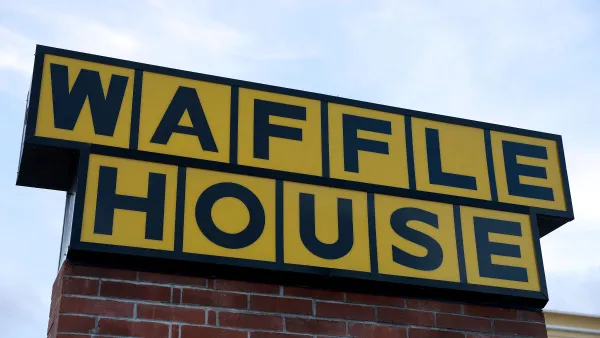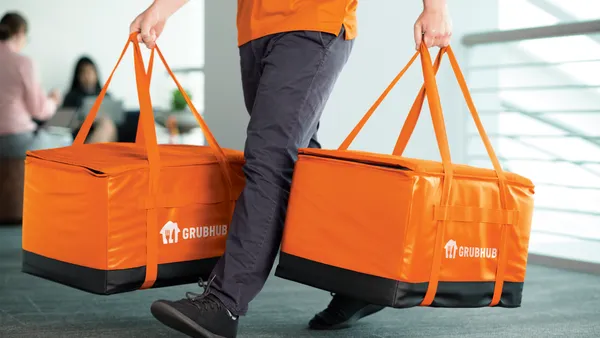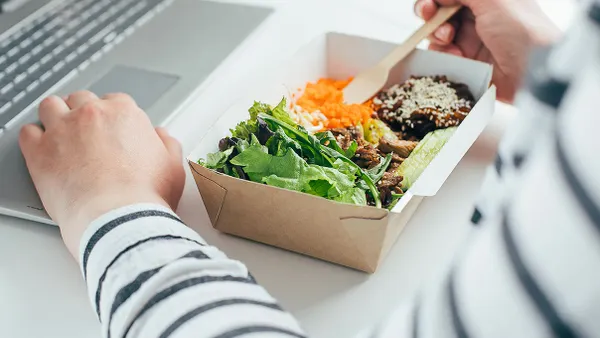Dive Brief:
- The NPD Group has predicted that food delivery via drone will be a part of the restaurant delivery market in Great Britain within the next five years, Foodservice Equipment Journal reports.
- Delivery is the industry’s fastest-growing channel in the market, according to the publication, which expects drones to help reduce costs and expand reach.
- Drone delivery already exists in Australia and Iceland and, just last week, Alphabet’s Google became the first drone operator to receive approval from the U.S. Federal Aviation Administration.
Dive Insight:
The restaurant world got its first glimpse of drone pizza delivery in 2016, when Domino’s flew a pie to a customer in New Zealand. At that time, Don Meij, Domino’s CEO in that market, said drone delivery can avoid traffic congestion and lights and safely reduce delivery time. "This is the future," he said.
Other restaurant brands like Pieology have explored the potential of drones, but considering the staggering pace at which technology moves and the explosion of the delivery market in general, there hasn’t been a lot of movement since 2016. That seems to be changing now, however, and the charge is being led by a few heavy hitters.
Earlier this month, Google parent Alphabet launched the first delivery by drone service in Australia, claiming to be the first in the world (although Iceland company AHA and Flytrex launched drone delivery in 2017). According to the Evening Standard, Alphabet has been testing the technology in Australia since 2014 and was finally granted permission by that country’s aviation authority.
Regulation standards for what has been called “complex low-altitude operation” are one reason the service hasn’t quite yet taken off. Cost and logistics are also barriers. But as more players like Google and Uber (which plans its first drone delivery by 2021) jump into the space, cost should come down. And the logistics — where does the drone land, who is liable if something happens, which employee is in charge of hooking the food up to the drone, etc. — will get worked out as the market begins to saturate.
Although growing rapidly, the restaurant industry is on the ground floor in foodservice delivery. As operators increasingly depend on delivery to meet consumer needs while seeking new innovations to reduce costs, automated drone delivery squarely fits into the narrative.
There are also predicted benefits that come from brand visibility and the sheer novelty of having food delivered via drone. Though there are more questions than answers about any such delivery right now in the U.S., the FAA’s approval of Google’s drone company should speed things up. The company’s goal is to launch a drone delivery trial by the end of this year.












